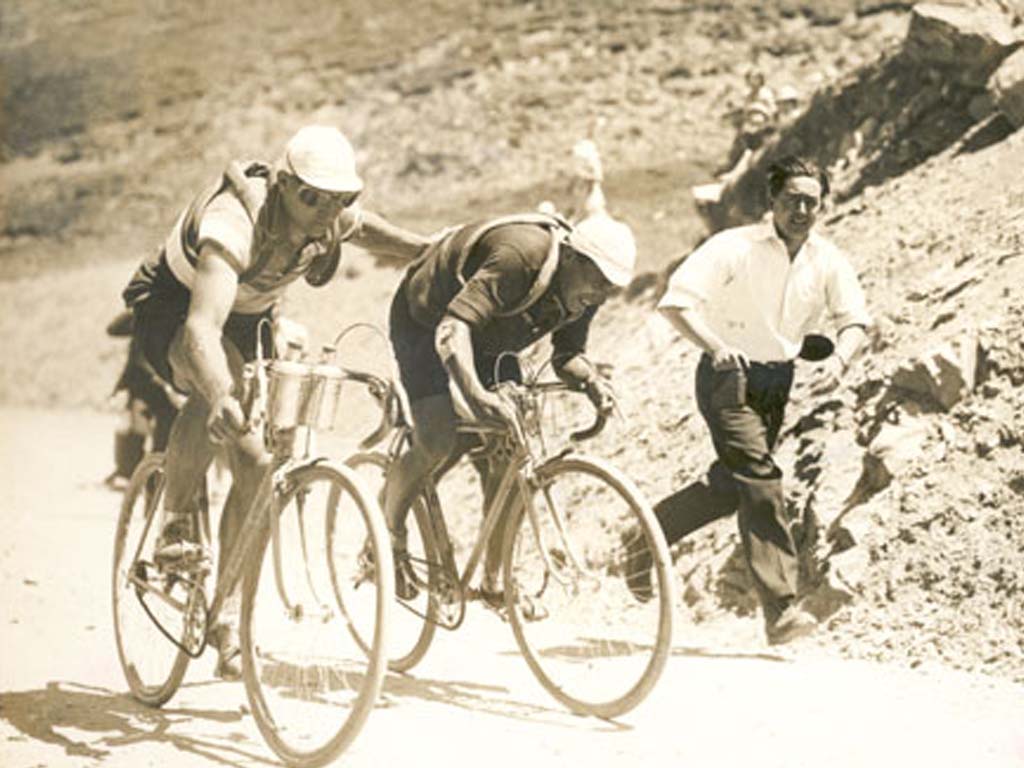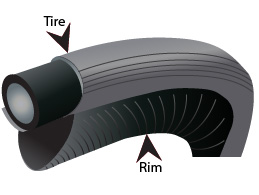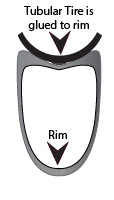Who uses Tubular Tires
Traditional tires used in road racing, time trials, and cyclocross are tubular. Tubular tires are full round tires with the inner tube sewn into the tire from the bottom, thus earning the name ‘sew-ups’. The tire is glued to the rim, creating a powerful bond and reducing the risk of the tire coming off the rim in the event of a flat.
These tires are soft of ‘Old School’ and were invented in the late 1800s. They were the choice of the earliest bike racers and some modern-day racers due to the decreased rolling resistance(performance) and reduced chance of the tire coming off the rim during a flat tire(safety).
Benefits of Tubular Tires
- Better ride quality
- Low rolling resistance
- Puncture resistant
- Low tire pressure
Tubular tires ride smoothly and give the bike a unique ride quality. Pro racers favor them for road racing and time trials because the enclosed system creates low rolling resistance. Running Tubulars on high-end carbon road and time trial wheels keep the wheels light and supple and improve the overall ride.
You can run with lower tire pressures without the worry of pinch flats is another significant benefit of tubular tires. Riding tires with less pressure increases traction, creating that smooth ride. They are puncture-resistant, and the latex material used in the tubular tires deforms around objects, making them less vulnerable to flats. A cyclist has less likelihood of crashing during a puncture because the tire is glued to the rim, whereas a clincher tire could come off the rim completely very easily. The rubber creates a buffer between the rim and the road, helping to keep damage to the rim minimal while coming to a stop after a puncture.
Mounting
Tubular tires are mounted to tubular-specific rims by first applying several coats of glue to the tire and the rim. Then place the valve into the valve hole of the rim, then make sure to roll the tire onto the rim evenly. This process of gluing tubular tires takes a certain skill, strength, and finesse. A good tubular tire only rolls as smooth as the tire is mounted. It is a good idea to have your tubular glued by your local bike shop to ensure safety.
Drawbacks
While these tires have a great feel, they have numerous drawbacks that cause these tires to be difficult to adopt. To fix a flat, you must carry a spare tubular tire on your bike rides. The spares are a bulky addition to your daily ride supplies. The use of glue to mount these tires will generally make the sealant of tubeless tires seem like easy. The process of gluing these tires takes a substantial amount of time, and typically, the glue has to be set for a period of time before riding them. It’s not advised to ride on wheels that have just been glued.
Pro’s Opinion
John Murphy
I raced on tubular tires for about half of my professional road racing career. While there were some very nice attributes to the tubular tires I rode, the gluing and pain of having to carry a spare tubular tire with on rides make this tire system too much for most bike riders. For a racer, they make good sense as all you have to do when you get a flat is put your hand up and your team car brings you a new wheel. Unless you have a professional mechanic on hand to glue and a spare car following you on all of your training rides, my suggestion is to stick with clincher tires/rims.
Sam Yates
My thoughts on tubular tires are pretty simple. With advances in tire materials, puncher protection, weight, and the advent of tubeless systems has made the tubular tire obsolete. It’s hard to install and time-consuming for the home mechanic. And expensive to have a bike shop always doing the new tire swaps. I don’t think it will be long before they are another piece of bike history!






